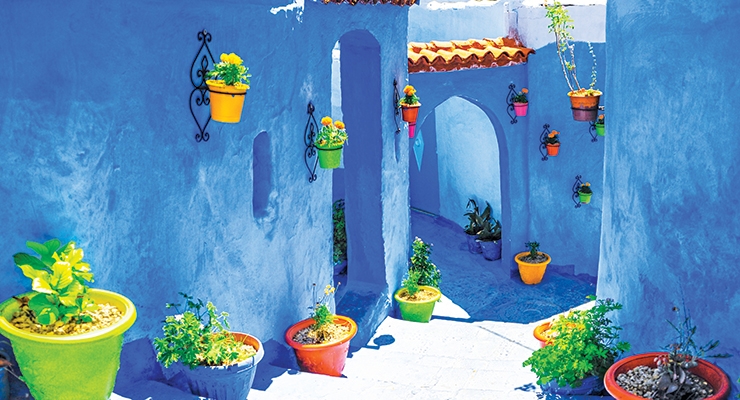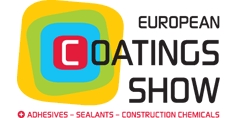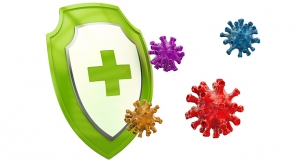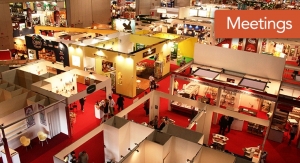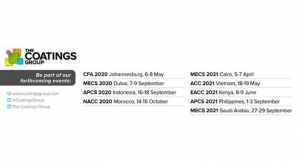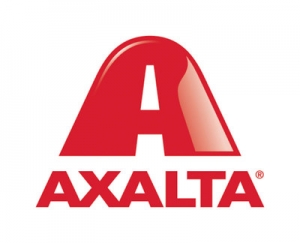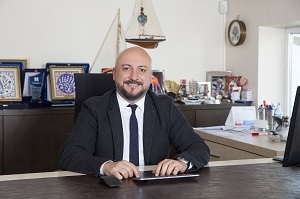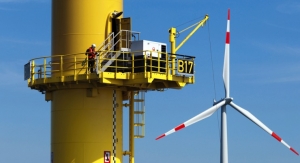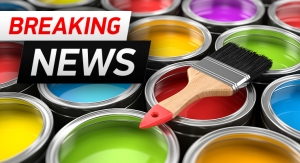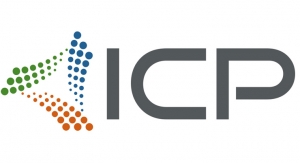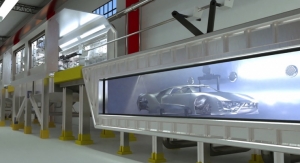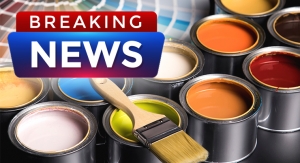Shem Oirere , Africa Correspondent12.09.16
The ongoing construction of additional housing units by Morocco’s Ministry of Housing and Urban Policy to meet the annual demand of 150,000 units remains the major growth driver of the North African country’s paints and coatings market according to market analyst Frost & Sullivan.
“Housing construction plans to overcome the shortage deficit and the establishment of a free trade area will see increased manufacturing of coatings in Morocco,” said Richard Weissenberg, Frost & Sullivan Business Unit Leader Chemicals, Materials and Food-Africa.
Weissenberg, who gave a presentation on the “African growth opportunities for the coatings industry” at the North African Coatings Congress 2016 in Casablanca, Morocco, said demand for coatings in Morocco was estimated at $350 million in 2010 when local production was estimated at 174,000 metric tons, figures which still give an indication of current status of the market.
Separately, market analyst Oxford Business Group (OBG) estimates that Morocco is constructing 170,000 housing units set for completion by the end of 2016 to reduce the country’s current housing deficit to 400,000, driving up further demand for paints and coatings.
“Social housing has been the main driver of construction and real estate activity in recent years, accounting for around 70 percent of developments in 2014,” said OBG Sin its recent analysis “State housing and infrastructure projects in Morocco drive growth in construction and real estate.”
“The government aims to reduce the deficit to 400,000 units by 2016 by building an additional 170,000 units per year,” the analysis says adding that the number of social housing units built in 2014 fell short of that target, and saw a slight reduction to some 140,880, down 1.1 percent from the 142,501 units built in 2013.
“Demand for housing is expected to continue growing by some 150,000 units per year,” it said.
At the NACC forum in Casablanca, Weissenberg said Morocco’s paints and coatings manufacturing plants are currently operating at between 65 and 70 percent of total installed capacity, an indication they production potential exists to meet anticipated increase in demand.
“Morocco’s paints and coatings market demand growth rate is forecast to be less than 4 percent in the medium term,” said Weissenberg.
Morocco’s coatings market is dominated by manufacturers Colorado SA, Astra Peintures, Akzo Nobel SA (Astral) and Facop Peintures, which combined produce an estimated 200,000 metric tons per year.
Colorado S.A. is the market leader in Morocco with a production capacity of about 52,000 metric tons per annum of a range of products, such as coatings, vinyl paints, concentrated pigments, wood varnishes and decorative paints, among others.
Other products by Colorado S.A. include paint thinners and application materials which it produces in partnership with other firms such as Artilin, Candis, Franpin, ACM Italie and Rust Oleum.
“Colorado S.A. sources 80 percent of their raw material from foreign manufacturers and the remainder from local raw material manufacturers,” said Weissenberg.
Atlas Peintures (B.H.F.), which produces an average of 40,000 metric tons every year holds an estimated market share of 23 percent and manufactures some of its own raw materials for its own consumption with main focus on manufacture of decorative coatings.
Casablanca-based Astral Peintures Batiment (Akzo Nobel S.A. ) has a 19 percent share of the Moroccan coatings market manufacturing an estimated 33,000 metric tons annually and markets its coatings under the name Astral and Sadvel mainly decorative, wood and automotive coatings.
Weissenberg said Facop Peintures in Morocco is the fourth largest coatings manufacturer with a 28,000 metric tons manufacturing capacity.
Decorative coatings hold the largest share of the total coatings products produced in Morocco at 70 percent.
“Wood coatings and automotive refinish coatings are the two second biggest coatings products being locally produced in Morocco at 13 percent and 9 percent respectively,” said Weissenberg.
“More than 90 percent of the decorative coatings demanded in Morocco is met by local manufacturers,” said Weissenberg.
Although 60 percent of the raw materials for coatings manufacture in Morocco are imported, local manufacturers SMP, Clariant, and Consortium Morocco produce the remaining requirements for the coatings makers in this North African market.
An analysis of decorative coatings in the Morocco market shows that up to 90 percent are waterbased, with the remainder solvent-based according to Weissenberg.
Demand for marine coatings and road markings in Morocco are met through importation, with all can and coil coatings also importation, mainly from Beckers in France.
Weissenberg also projected increased growth of the North Africa automotive coatings market driven mainly by the planned production by automotive original equipment manufacturers (OEMs) in Morocco, Algeria and Egypt.
“Although the paints and coatings opportunities are bigger in North Africa’s construction sector, we should watch the automotive coatings growth,” he said.
He said planned production by automotive OEMs in Algeria for example is set to increase from 28,000 units in 2015 to 408,000 in 2022.
This major growth in Algeria will be driven by automotive companies such as Faw Motor Company, Scania, Iveco, Cima Motors-Hyundai, Volkswagen, Mercedez Benz SAPPL-MB, Renault truck, Renault Algerie Production and PSA Peugeot-Citroen.
In Morocco, companies such as PSA Peugeot-Citroen and Renault are set to launch manufacturing plants by 2019 while Ford, Volkswagen and Hyundai have expressed interest in the market.
Similar trend is expected in Egypt where BMW, General Motors, Nissan, Hyundai, Daewoo are eyeing a share of the automotive market, increasing growth opportunities for automotive coatings segment.
Separately, multinational professional services firm Deloitte said in an earlier report that despite Egypt, Morocco, and Algeria having a sizeable automotive assembly and manufacturing sectors, “fewer than 900 000 vehicles were produced on the continent accounting for just over 0.9 percent of global production in 2015.”
However, the company said: “Due to the rise of income levels in many African countries and the emergence of a middle class, Deloitte regards the continent as the final frontier for the global automotive industry.”
“Given Africa’s population size and its positive economic outlook, automotive companies will be able to gain a competitive advantage by adopting a medium- to long-term view towards the continent,” it said.
The consultancy firm said although the domestic vehicle production and assembly “may have substantial multiplier effects for African economies, and could act as a catalyst for industrialization and economic diversification, this is at a lesser stage of development.”
The positive growth projections for Morocco’s housing sector and North Africa’s automotive industry are likely to be the main drivers of the coatings industry in these markets both in the short and medium term.
“Housing construction plans to overcome the shortage deficit and the establishment of a free trade area will see increased manufacturing of coatings in Morocco,” said Richard Weissenberg, Frost & Sullivan Business Unit Leader Chemicals, Materials and Food-Africa.
Weissenberg, who gave a presentation on the “African growth opportunities for the coatings industry” at the North African Coatings Congress 2016 in Casablanca, Morocco, said demand for coatings in Morocco was estimated at $350 million in 2010 when local production was estimated at 174,000 metric tons, figures which still give an indication of current status of the market.
Separately, market analyst Oxford Business Group (OBG) estimates that Morocco is constructing 170,000 housing units set for completion by the end of 2016 to reduce the country’s current housing deficit to 400,000, driving up further demand for paints and coatings.
“Social housing has been the main driver of construction and real estate activity in recent years, accounting for around 70 percent of developments in 2014,” said OBG Sin its recent analysis “State housing and infrastructure projects in Morocco drive growth in construction and real estate.”
“The government aims to reduce the deficit to 400,000 units by 2016 by building an additional 170,000 units per year,” the analysis says adding that the number of social housing units built in 2014 fell short of that target, and saw a slight reduction to some 140,880, down 1.1 percent from the 142,501 units built in 2013.
“Demand for housing is expected to continue growing by some 150,000 units per year,” it said.
At the NACC forum in Casablanca, Weissenberg said Morocco’s paints and coatings manufacturing plants are currently operating at between 65 and 70 percent of total installed capacity, an indication they production potential exists to meet anticipated increase in demand.
“Morocco’s paints and coatings market demand growth rate is forecast to be less than 4 percent in the medium term,” said Weissenberg.
Morocco’s coatings market is dominated by manufacturers Colorado SA, Astra Peintures, Akzo Nobel SA (Astral) and Facop Peintures, which combined produce an estimated 200,000 metric tons per year.
Colorado S.A. is the market leader in Morocco with a production capacity of about 52,000 metric tons per annum of a range of products, such as coatings, vinyl paints, concentrated pigments, wood varnishes and decorative paints, among others.
Other products by Colorado S.A. include paint thinners and application materials which it produces in partnership with other firms such as Artilin, Candis, Franpin, ACM Italie and Rust Oleum.
“Colorado S.A. sources 80 percent of their raw material from foreign manufacturers and the remainder from local raw material manufacturers,” said Weissenberg.
Atlas Peintures (B.H.F.), which produces an average of 40,000 metric tons every year holds an estimated market share of 23 percent and manufactures some of its own raw materials for its own consumption with main focus on manufacture of decorative coatings.
Casablanca-based Astral Peintures Batiment (Akzo Nobel S.A. ) has a 19 percent share of the Moroccan coatings market manufacturing an estimated 33,000 metric tons annually and markets its coatings under the name Astral and Sadvel mainly decorative, wood and automotive coatings.
Weissenberg said Facop Peintures in Morocco is the fourth largest coatings manufacturer with a 28,000 metric tons manufacturing capacity.
Decorative coatings hold the largest share of the total coatings products produced in Morocco at 70 percent.
“Wood coatings and automotive refinish coatings are the two second biggest coatings products being locally produced in Morocco at 13 percent and 9 percent respectively,” said Weissenberg.
“More than 90 percent of the decorative coatings demanded in Morocco is met by local manufacturers,” said Weissenberg.
Although 60 percent of the raw materials for coatings manufacture in Morocco are imported, local manufacturers SMP, Clariant, and Consortium Morocco produce the remaining requirements for the coatings makers in this North African market.
An analysis of decorative coatings in the Morocco market shows that up to 90 percent are waterbased, with the remainder solvent-based according to Weissenberg.
Demand for marine coatings and road markings in Morocco are met through importation, with all can and coil coatings also importation, mainly from Beckers in France.
Weissenberg also projected increased growth of the North Africa automotive coatings market driven mainly by the planned production by automotive original equipment manufacturers (OEMs) in Morocco, Algeria and Egypt.
“Although the paints and coatings opportunities are bigger in North Africa’s construction sector, we should watch the automotive coatings growth,” he said.
He said planned production by automotive OEMs in Algeria for example is set to increase from 28,000 units in 2015 to 408,000 in 2022.
This major growth in Algeria will be driven by automotive companies such as Faw Motor Company, Scania, Iveco, Cima Motors-Hyundai, Volkswagen, Mercedez Benz SAPPL-MB, Renault truck, Renault Algerie Production and PSA Peugeot-Citroen.
In Morocco, companies such as PSA Peugeot-Citroen and Renault are set to launch manufacturing plants by 2019 while Ford, Volkswagen and Hyundai have expressed interest in the market.
Similar trend is expected in Egypt where BMW, General Motors, Nissan, Hyundai, Daewoo are eyeing a share of the automotive market, increasing growth opportunities for automotive coatings segment.
Separately, multinational professional services firm Deloitte said in an earlier report that despite Egypt, Morocco, and Algeria having a sizeable automotive assembly and manufacturing sectors, “fewer than 900 000 vehicles were produced on the continent accounting for just over 0.9 percent of global production in 2015.”
However, the company said: “Due to the rise of income levels in many African countries and the emergence of a middle class, Deloitte regards the continent as the final frontier for the global automotive industry.”
“Given Africa’s population size and its positive economic outlook, automotive companies will be able to gain a competitive advantage by adopting a medium- to long-term view towards the continent,” it said.
The consultancy firm said although the domestic vehicle production and assembly “may have substantial multiplier effects for African economies, and could act as a catalyst for industrialization and economic diversification, this is at a lesser stage of development.”
The positive growth projections for Morocco’s housing sector and North Africa’s automotive industry are likely to be the main drivers of the coatings industry in these markets both in the short and medium term.

